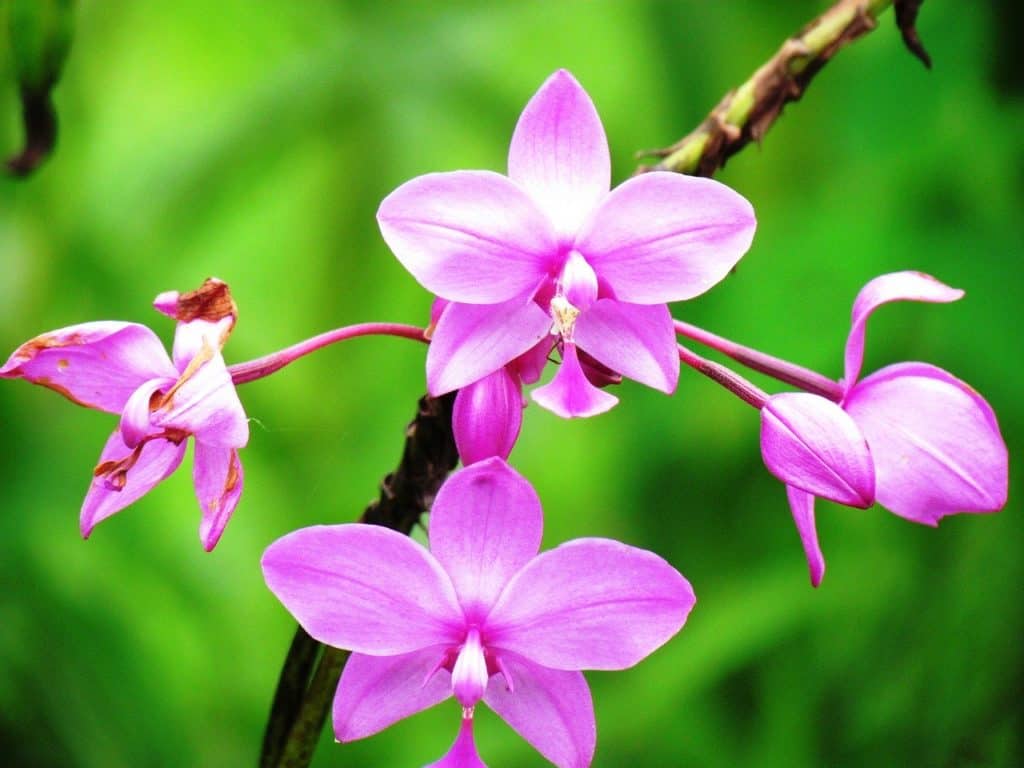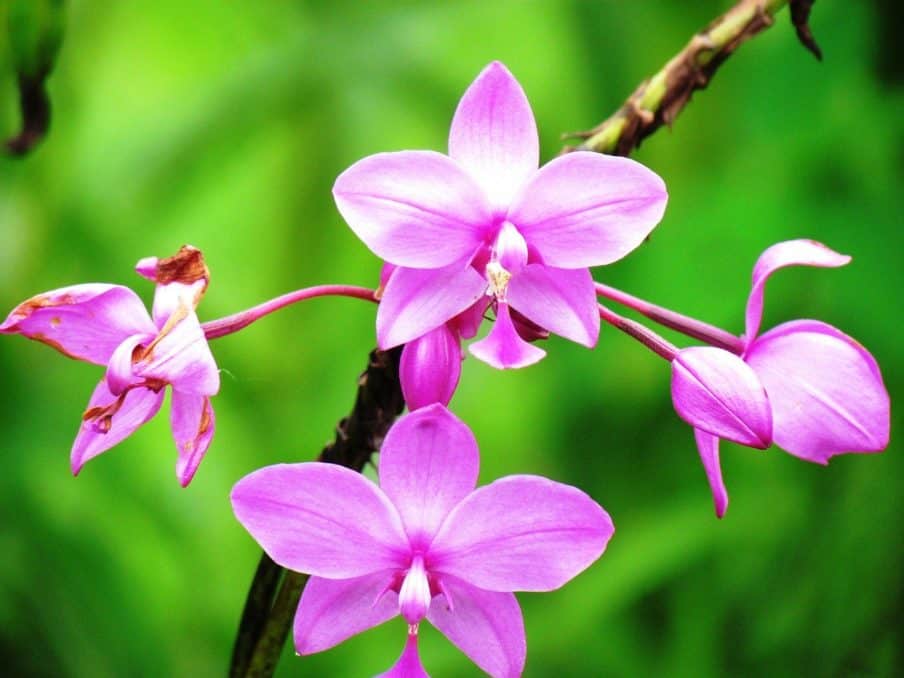
Guaria Morada is the national flower of Costa Rica. The flower is a type of orchid and it is native to the Central American country. It has a deep purple color and it is known for its striking appearance.
Costa Rica is home to many beautiful plants and animals. Its rainforest is home to a diverse ecosystem, and you’ll be hard pressed to single out one living thing, whether plant or animal, that you can claim to be the most beautiful.
Out of the 1,500 orchid species found in Costa Rica, it was the one designated as the country’s national flower ,so lets looks into its long history, where to find it and how the Guaria Morada became the national flower of Costa Rica.
What is the Guaria Morada Flower?
Guarianthe Skinneri, originally catalogued as Cattleya Skinneri and known locally in Costa Rica as Guaria Morada, is an orchid known for its distinctly purple coloration with an almost diamond-like shine. The Guaria Morada is an epiphyte, meaning that unlike other flowers, this one does not require soil in order to survive.
Rather, it grows on other plants, usually trees, or non-soil mediums like rocks in high altitudes. It’s far from being a parasitic plant though, and mostly grows on trees just for structural support. It gets the majority of its nutrients not from any host plant, but from the air and from the rain.
Much like other orchid species, the Guaria Morada blooms only during a short window of time every year. For Costa Rica’s national flower, that window is only 4 months long, between January and April. T
The orchid itself will reach full bloom during March, which happens to be the best time to visit Costa Rica if you plan on looking for this flower. This orchid blooms in a distinct purple shade, which can vary from deep purple to light pink.
Where To Find This Orchid in Costa Rica
The Guaria Morada can be relatively difficult to find in the wild. This is because it has been heavily collected through the years, thanks to the orchid’s significance in Costa Rica’s culture.
Nowadays, wild Guaria Morada orchids are protected by the government, so many of the flowers you’ll see in Costa Rica are artificially cultivated. If you’re hell bent on finding the orchid in the wild, however, they’re usually growing in pre-mountain rainforests or jungles on high elevations, anywhere between 1500 feet to 3500 feet above sea level.
Another reason why it’s so difficult to find them in the wild is because this orchid tends to grow high, usually among the branches of very tall trees. Although the Guaria Morada grows in all parts of Costa Rica that is at a high enough elevation, they tend to grow mostly on the western side of the country, namely around the Central Valley region.
Another good place to find them is the Rincon de la Vieja National Park, where you can also take a dip in one of its many hot springs or go rafting after you find this beautiful flower.
Costa Rica’s jungles are indeed prime areas where you can find the fabled orchid. Monteverde, located in the Cordillera de Tilaran is considered to be the most densely populated jungle in the world when it comes to orchids in general, so it’s not too uncommon to find a Guaria Morada bloom here.
If you’re not too fond of hiking up a mountain, climbing up a tall tree or going into the wilderness in general but still want to see this enigmatic flower, you can simply visit one of Costa Rica’s many public gardens. One of the most famous among these is the Lankester Botanical Garden located in the city of Cartago.
The Lankester Garden, which is operated by the University of Costa Rica, has a large collection of flowers and plants, most of which are found in the country, and this includes the Guaria Morada. It’s a good place to go if you want to learn more about the Guaria Morada or any endemic plant within Costa Rica.
The flower itself is also very important to Costa Rica’s people, so chances are, you can easily spot at least one plant being cultivated in any household in Costa Rica. You can also find the Guaria Morada on display during orchid shows held during the year. There’s an orchid show in March as well as in October in Alajuela.
Cultural Significance of The Orchid in Costa Rica
The majority of Costa Rica’s population consider the Guaria Morada a national treasure, and it’s not surprising that it has had such a huge effect on Costa Rican culture.
It is so intrinsic within Costa Rican culture that many families grow these flowers within their homes and have become a significant feature of a typical Costa Rican household, even when it’s deep inside the city.
Many of these families would even compete on who could produce the most beautiful flowers, and even take their prized plants to annual orchid shows for this purpose.
The beautiful bloom of the Guaria Morada is often associated with the beauty of Costa Rica’s people, namely their young women. It is also meant to represent the abundance and elegance of nature.
According to Costa Rican tradition, the Guaria Morada can also bring good luck to any household. The flower is also used to adorn many altars and churches during major religious celebrations, including Easter.
How the Guaria Morada Became the National Flower
The Guaria Morada’s impact on Costa Rica’s culture has been felt for centuries long before it was even declared as the country’s national flower. It wasn’t until June 15, 1939 that this beautiful orchid’s significance was completely realized, when it was declared Costa Rica’s national flower.
In 1937 when a nationwide vote hosted by the country’s leading horticulturalists was cast on which plant was going to be the national flower. Two years later, Guaria Morada was declared the winner.
The people’s reverence to the flower didn’t stop with that vote, hwoever. In fact, 30 years after it was declared Costa Rica’s national flower, an entire week in March was dedicated to celebrating this very important plant and many other orchids endemic to Costa Rica.
This celebration is known as Orchid Week and is usually held on the 2nd week of March, when the Guaria Morada is thought to look its best, which is when it’s at full bloom.

